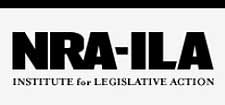
U.S.A. -(AmmoLand.com)- For years, voters in the Evergreen State have been assured that if only they approve certain gun control ballot initiatives, they would “save lives” and reduce crime. The Washington Alliance for Gun Responsibility (WAGR), the organization pushing these ballot measures, has made an industry (if the term applies to an entity funded by donations from billionaires) out of peddling a new gun control law every so often.
The first measure WAGR and its allies proposed was Initiative 594 (2014), the so-called “universal background check” law, which required a federal background check for almost every gun sale and transfer, including temporary transfers, gifts and loans. The preamble to the initiative referred to the law as “an effective and easy mechanism” to eliminate access to guns by criminals, but it applied indiscriminately to artifact loans to museums as well as transfers during firearm safety classes and by licensed professionals in the security guard industry.
The second measure was Initiative 1491 (2016), a 21-page measure to authorize courts to remove firearms from persons presumed to be dangerous, based on allegations made by past or present spouses, dating partners, cohabitants, or any other persons related by blood or marriage. As with I-594, this was presented as a means of reducing violence and saving lives.
Initiative 1639 (2018) was also premised on increasing public safety, in this case by imposing a firearm storage requirement and restricting “semi-automatic assault rifles,” a made-up term that includes rifles used for legitimate and ordinary hunting, sporting, and competition activities. According to the initiative, “shootings involving the use of semiautomatic assault rifles have resulted in hundreds of lives lost…”
The NRA and others opposed these ballot initiatives, arguing they would accomplish nothing except to further burden honest gun owners. Law enforcement groups opposed I-594 and I-1639, stating the measures would have no impact on public safety or crime as criminals would “continue to ignore the law.” The American Civil Liberties Union and the National Alliance on Mental Illness in Washington State declined to support I-1491, citing concerns with the stigmatizing of mental illness, due process protection, and its questionable effectiveness.
Washington voters, though, chose to trust WAGR and the promised results.
Several years later, one way to evaluate the benefits of these initiatives is to examine information on crime rates and crime. The Washington Association of Sheriffs and Police Chiefs (WASPC) publishes an annual report on crime in the state, compiled from data submitted to the Washington State Uniform Crime Reporting Program by local law enforcement agencies. The primary objective of the report “is to implement and administer a uniform system of collecting crime and arrest statistical data … and present the information in complete, accurate, and timely method.”
Contrary to the claims made in promoting the restrictions on “semi-automatic assault rifles,” the reports establish that rifles of any kind are rarely used in murders in the state, and this has consistently been the case before I-1639 was approved. In 2012, rifles were identified as the weapon in just three murders that year, compared to knives (28), blunt objects (12), and “personal weapons” like hands, fists or feet (11). Knives, personal weapons, and blunt objects continue to exceed, by a large margin, the use of rifles in murders for every year since. In 2018, for example, rifles were used in two murders, while knives (45), drugs/narcotics (7), personal weapons (17), blunt objects (9), and even vehicles (3) were much more likely to be the weapon of choice. This trend continues into 2020.
Another useful indicator is the movement of the state’s crime rates. The WASPC reports show that the rate for “crimes against persons” (those where the victim is always an individual, like homicides, sex crimes, assaults, and violations of protective orders) has increased from 10.15/1,000 pop. in 2013 to over 13.0 in succeeding years. The rate for what the reports call “group A” crimes, a much broader class that includes the above offenses as well as burglary, kidnapping, property crimes, and others, has been climbing, too, since the first initiative was enacted. In addition to these escalations, the latest report for 2020 contains a further worrisome sign: while violent crimes overall dropped during the pandemic year compared to 2019, the number of murders statewide in 2020 jumped by almost 50% over those of the previous year.
The number of “weapon law violations,” defined as “[v]iolations of laws or ordinances prohibiting the manufacture, sale, purchase, transportation, possession, concealment, or use of firearms, cutting instruments, explosives, incendiary devices, or other deadly weapons,” has been increasing since 2013. According to the reports, these violations are overwhelmingly related to possession or concealment of a weapon rather than weapon use, and are therefore classed outside of the “crimes against persons” category. Perhaps unsurprisingly, given the proliferation of new gun laws, violations have gone from a 2013 rate of 0.58/1,000 pop. to 0.76/1,000 pop. in 2020.
Based on the representations and assurances of WAGR and its like-minded supporters and enablers in light of this crime data, Washington’s voters are justified in asking how it is that their communities and lives have been made safer since these initiatives were imposed. Instead, by expanding state laws regulating the sale, transfer, possession, and storage of firearms, even by lawful owners, the initiatives have made it more difficult for citizens to protect themselves and their families against criminals, and much more likely that these ordinary citizens will inadvertently violate a firearm restriction and become criminals themselves.
Causes of crime are often complex, but the message for voters in Washington State and elsewhere is simple: criminals ignore laws, so adding more laws to fix the failure of criminals to comply is not a solution. Ask questions about proposed “gun violence prevention” schemes and whether these are, in fact, the “evidence-based solutions” they are held out to be. Beware of billionaire hobbyists spending millions to bankroll gun control laws to restrict the freedom and fundamental rights of everyday Americans.
About NRA-ILA:
Established in 1975, the Institute for Legislative Action (ILA) is the “lobbying” arm of the National Rifle Association of America. ILA is responsible for preserving the right of all law-abiding individuals in the legislative, political, and legal arenas, to purchase, possess, and use firearms for legitimate purposes as guaranteed by the Second Amendment to the U.S. Constitution. Visit: www.nra.org

The post Great Expectations, Empty Promises: Gun Control in Washington State appeared first on AmmoLand.com.
from https://ift.tt/3iTPRDG
via IFTTT

No comments:
Post a Comment